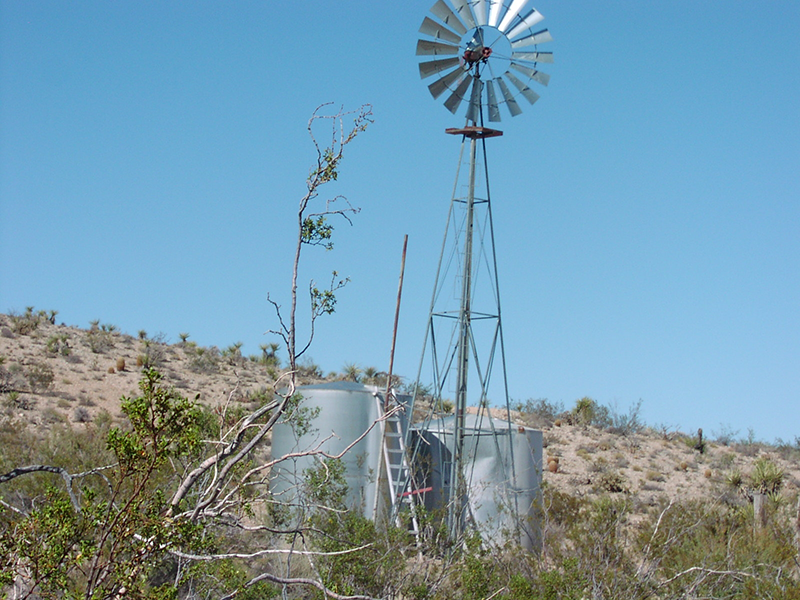What a place this desert is! Strange as it sounds, it feels to me dry, as if the area may be in serious drought and the flora are hanging on but suffering. Just a feeling and I’ll check it out when I can. But there’s none of OPC’s vibrancy and comparatively less green; shades of brown is the dominant color motif. Even though the rock piles I mentioned are hardly present here there remain plenty of rocky prominences, and the landscape has a tough aura about it, as if it will make-do somehow no matter how long before moisture arrives. I hope it’s not fooling itself during what I’m coming to think of as the approach of Nature’s “end days” as compared to what humans grew accustomed to over the post-Ice Age millennia. Both oases I hiked to were dry and probably have been for years, although my guidebook is over thirty years old and speaks as if water were still present when it was published; small scale industry set itself up beside the rare water, a mill at the first oasis and mining at the other (leaving toxicity in the surrounding landscape as mining is wont to do). Great, tall, aged fan palms, which are native to this region, still hang on at both (former) oases. At the first they are companioned by eucalyptus that have also been there for a while and are definitely nonnative so were probably brought by people living nearby at the time to dress up the place. Cottonwoods take their place at the second one. These places stand out as utterly unique in this Colorado Desert, so much so that I would think homage more appropriate by far than milling and mining in their presence. A rule of life in America: No place is so sacred or even so special that it won’t be turned to profit by someone if allowed. Rule #2: If allowed, there will be people to fight over possession. Rule #3: The winner will leave a mess when exploitation has taken all there is to take.
Photo: Adam Anna Ore Mine Spring, Mojave National Preserve, NPS.


